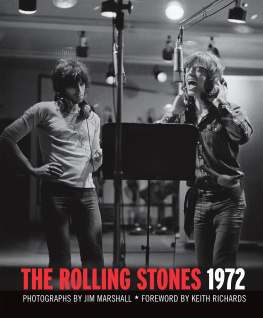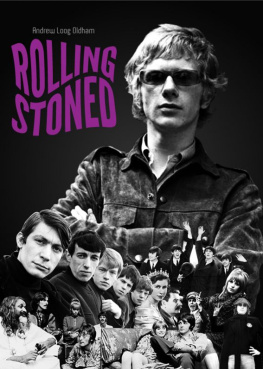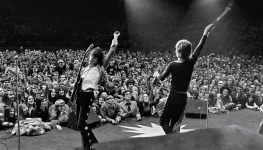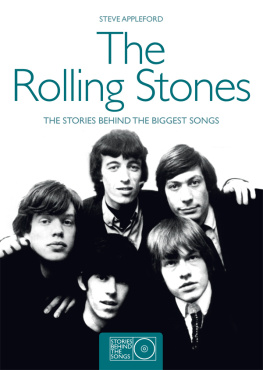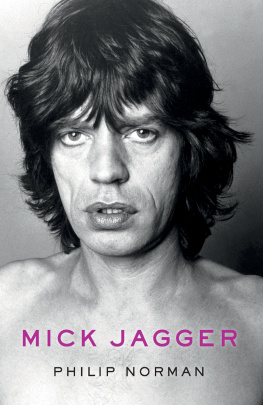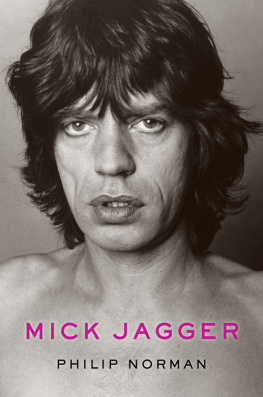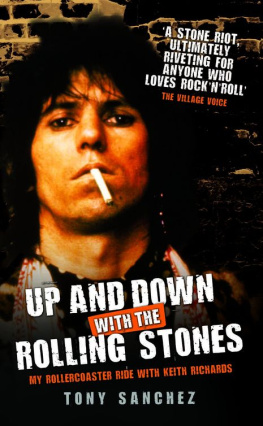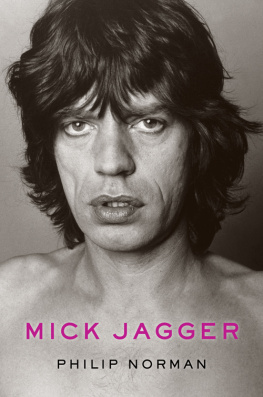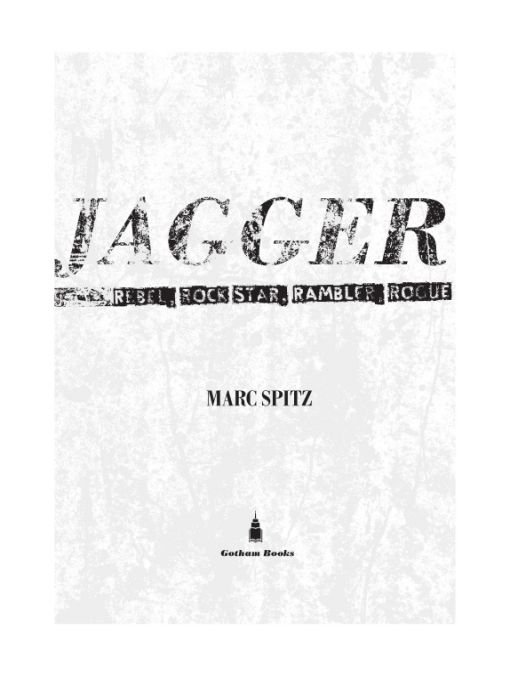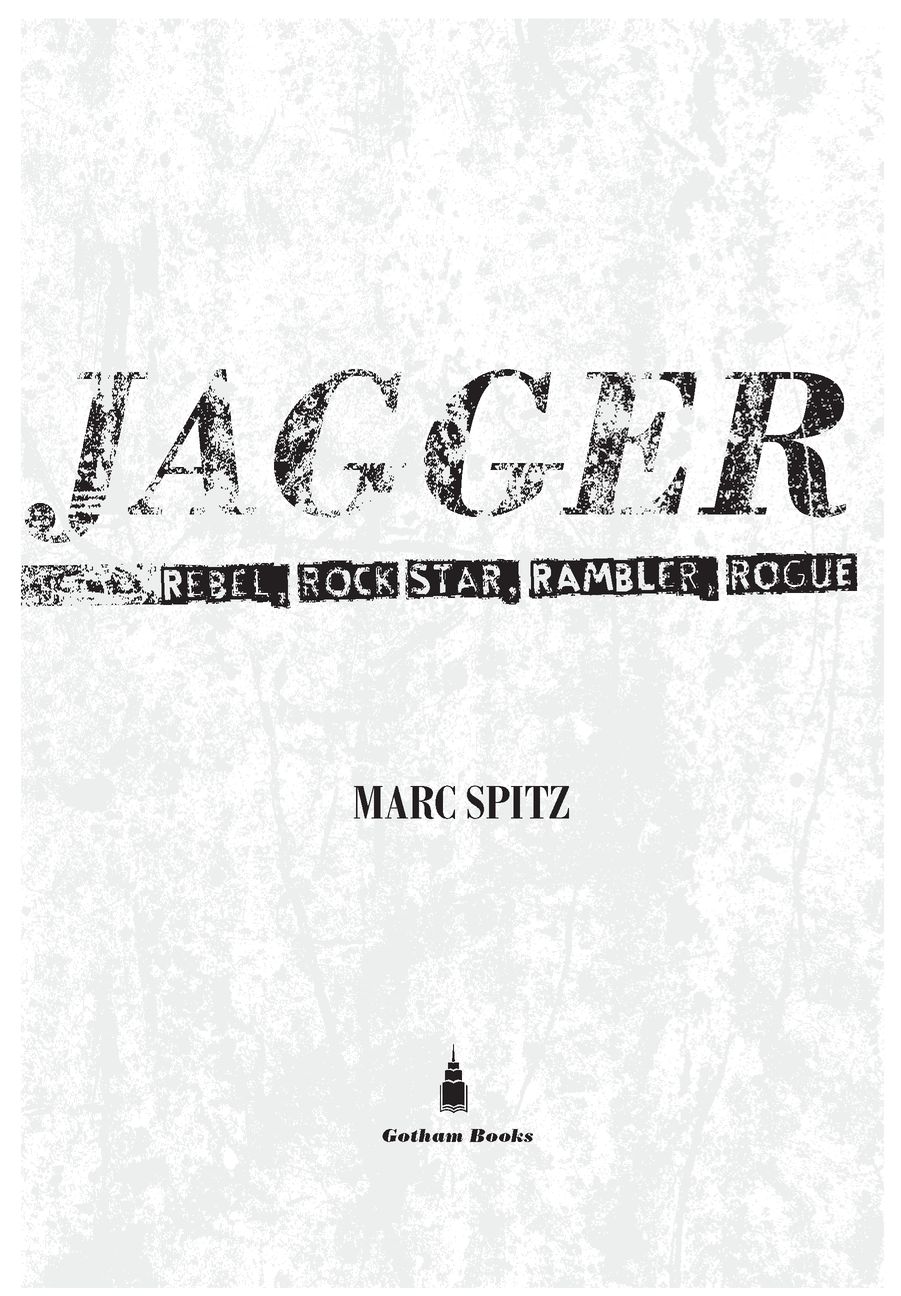Table of Contents
For Brendan Mullen,
who loved a good argument
INTRO
Brenda
Most people dont remember Rock Against Yeast. As far as Saturday Night Lives musical parodies go, its not nearly as iconic as John Belushis Joe Cocker impression or the Christopher Walkenanchored Blue Oyster Cult Behind the Music send-up (known to all simply as More Cowbell). Still, within this mostly forgotten sketch, which aired during the shows February 17, 1979, episode (hosted by the teen idol and television star turned country rocker Rick Nelson), you will find the basis for this book. Rock Against Yeast perfectly articulates the current Mick Jagger Problem : Can we continue to worship and desire a man whom we dont really like anymore? The Mick Jagger Problem leads us to question whether we ever really did like him. If the answer is no, then how did this guy remain a constant presence in popular culture for fifty years and not, for one instance in that half century, seem like... our pal? After all, his songwriting partner, business partner, and sometime nemesis Keith Richards has been everyones cool older brother since Lyndon B. Johnson was president of the United States.
Back to Rock Against Yeast. In this sketch, the late Gilda Radner portrays Candy Slice, a Patti Smith manqu with a rooster shag haircut, white tank top, black stick legs, sneakers, unshaven armpits, and a chemically ruined equilibrium. She is participating in a superstar benefit concert featuring Bob Marley (Garrett Morris), Dolly Parton (Jane Curtin), Olivia Newton-John (Laraine Newman), and a fat and thin Elvis tribute band known as the Elvii (John Belushi and Dan Aykroyd), as well as Nelson himself. Bill Murray, as his recurring rock industry, satin-baseball-jacketed sleazeball Jerry Aldini (of Polysutra Records), pulls a beer-swigging, belching Candy out of her oxygen tent long enough to participate in the above-mentioned benefit concert, where she debuts, along with her band, the Candy Slice Group, a garage rock number entitled Gimme Mick. Its a complicated ode to both her attraction and repulsion to a then thirty-six-year-old Mick Jagger. Mick Jagger, if youre out there, this is for you, Candy slurs.
Gimme Mick! Gimme Mick! she later shouts in the chorus. Babys hair, bulgin eyes, lips so thick! Are you woman? Are you man? Im your biggest funked-up fan. So rock and roll me till Im sick, Candy raps. The group soon takes it to the bridge, where Candy, having confessed her attraction to Mick, launches into a Patti Smithesque stream of consciousness that seems to equivocate it. You, Mick Jagger, actually continue to perform at a concert where someone got knifed and killed during the 60s, she raps, dredging the specter of the then decade-old concert at the Altamont Speedway in San Francisco where eighteen-year-old fan Meredith Hunter was killed by a furious Hells Angel while the Stones performed Under My Thumb, bad acid raged in thousands of nervous systems, and the love era supposedly ended (more on that later).
You, Mick Jagger, are English and go out with a model and get an incredible amount of publicity! Jagger had recently stolen the willowy Texan model Jerry Hall away from fellow rock and roll gentleman Bryan Ferry of Roxy Music (more on that later as well). You, Mick Jagger, dont keep regular hours! This was the Studio 54 era, when danceable new wave and disco ruled and Micks frequent late nights out made him a constant target for paparazzi like Ron Galella and gave him a permanent air of blearyeyed decadence. And finally: You, Mick Jagger, have the greatest rock and roll band in the history of rock and roll and you dont even play an instrument yourself!
Here we go. This is where we find the disconnect; the point where the Mick Jagger Problem achieves liftoff. The joke goes over with the studio audience, of course, largely because of Gildas charisma, genius, and conviction; but the accusation itself (affectionate as it clearly is) could not be more baseless. The joke works because it suits an idea of Mick Jagger that even thirty-two years ago was starting to metastasize. Inside of a half decade, it would almost completely take over the way we view Mick Jagger and obscure many of the facts. He has played instruments. Hes been the Rolling Stones harmonica player since vying for the position with the late Brian Jones in 1962. Listen to the malevolent solo at the end of the live version of Midnight Rambler (which you will find on Get Your Ya Yas Out) if you want to hear the sound of an instrument being played by someone born to do it, a musician. Even Keith Richards has praised Micks natural ability to play the blues harp. Hes not thinking when hes playing harp, Keith famously said years later. It comes from inside him; he always played like that, from the early days on. Theres also the not so small matter of the riff to the Stones 1971 No. 1 single Brown Sugar. Its probably playing in your head right now. It started as soon as you read the song title on this page. Id place it in the top, lets say, fifty, ever written, not just by the Stones but by anyone. And its Micks invention. Again, even Keith, who literally invents indelible riffs like (I Cant Get No) Satisfaction in his sleep, admits that this riff was the one that traveled across the rock and roll cosmos and took up residence in the head of the other guy. Not that it matters: Most people think Keith wrote it anyway. Micks far too intellectual to create something so basic, primal, and gritty, after all.
When we consider the Rolling Stones, we think of the heart and we think of the groin. We dont dwell on the brain. Keith is the heart, the veteran New Musical Express journalist turned music publicist Keith Altham remarked to me during an early morning telephone interview. Mick is the brain. The heart and the brain. They must function together to survive, but in all matters of poetry and cool, we credit the heart. The heart pumps. The brain schemes. This idea of a manipulative Mick Jagger has caused us to put the finger on him for a laundry list of culture crimes regarding the Rolling Stones long, dark past. Mick must have been the one who agreed to change the lyrics of Lets Spend the Night Together, to Lets Spend Some Time Together, at the behest of Ed Sullivans frightened flunkies. He surely fired sickly, confused, bloated Brian Jones and left him to drown. He threw the Hells Angels hed hired under the bus after Altamont. He forsook his rock and roll brothers and sisters for a retinue of Eurotrash counts and countesses... and Andy Warhol. He sullied the Stones gravitas by hobnobbing with Paul Young and Duran Durans Nick Rhodes in the early 80s as he wrestled with midlife and grasped for a solo pop career. He took our ticket money for the film Freejack and taxed the poor Verve for sampling a symphonic version of The Last Time, on Bittersweet Symphony. Hes even to blame for a 2010 World Cup curse (all the teams he rooted for from the stands lost in upsets). Conversely, everything that Keith Richards has done (including nearly derailing the Rolling Stones for good and forever with his all-consuming decade-long heroin addiction) amounts to our greatest antihero at work. Keith cashes the same checks and has never really missed a business meeting where a major decision has been made. Keith sat at the board tables in Geneva with a bowie knife, carving his initials into the table of this very conservative Swiss bank, while Mick and [former Stones business manager] Prince Rupert Lowenstein and myself sat around working out the tax plan, recalls former Stones staffer Peter Rudge. But Keith never left the room. This perception of Mick as the bands lone miser and cynic has been encouraged at every opportunity by Keith. During their greatest period of estrangement in the mid-80s, Keith happened to spy the jacket of a book by Yorkshire-born historical fiction writer Brenda Jagger, and from that moment, whenever his partner erred (in Keiths eyes), he was referred to (behind his back) as such.



